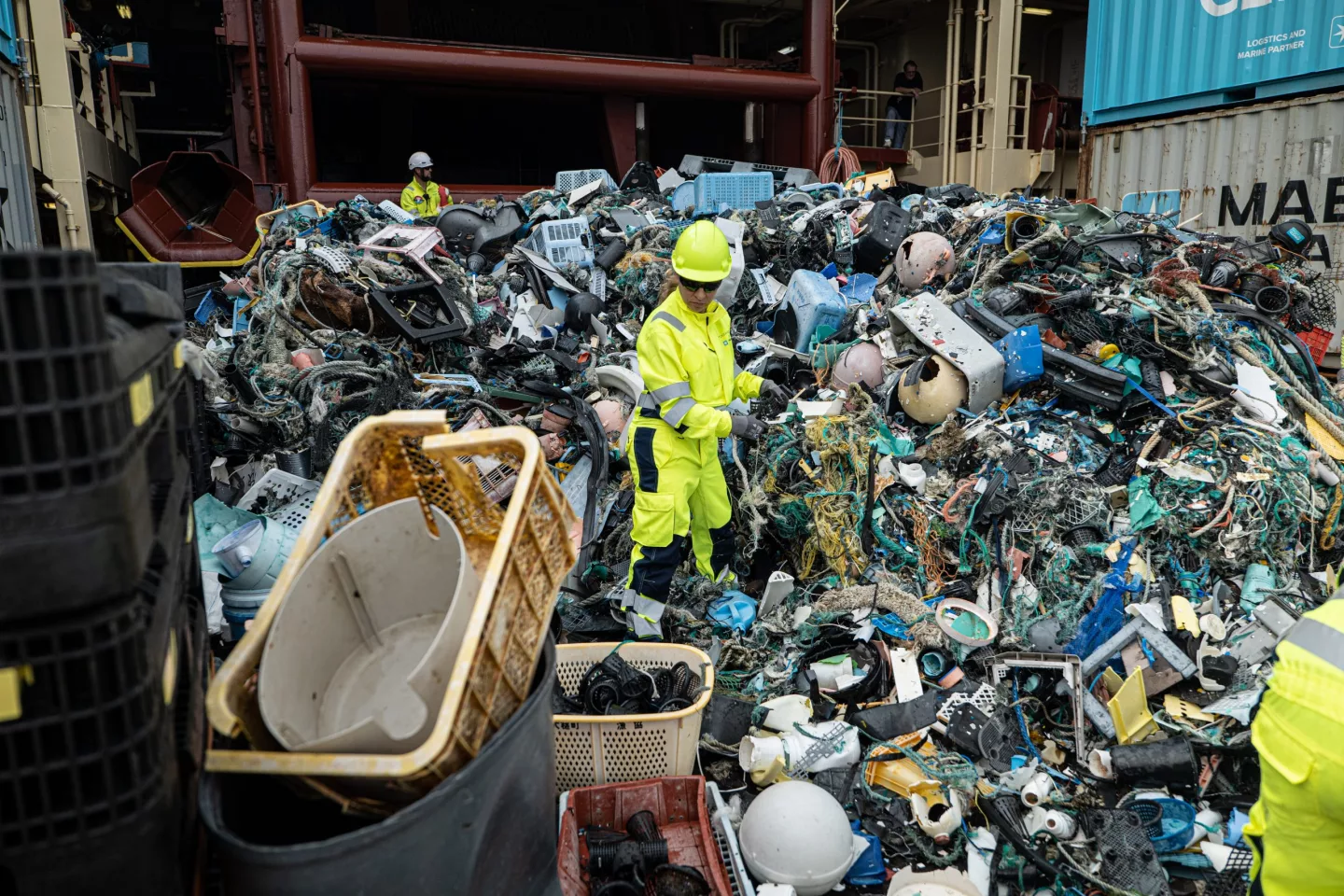Having only just returned from a trial campaign that yielded massive hauls of plastic waste, the Ocean Cleanup Project is now moving beyond testing and kicking off its first operational mission. This will involve redeploying its System 002 collection barrier while simultaneously developing an even larger one, fleets of which it says will eat up 50 percent of Great Pacific Garbage Patch every five years.
Launched in 2013 with ambitious plans to collect plastic from the ocean with huge floating barriers, the Ocean Cleanup Project went through a number of redesigns before launching System 002 in August of this year. Nicknamed Jenny, this was the team's largest system yet, spanning 800 meters (2,640 ft), with crewed vessels at either end dragging the barrier through the Great Pacific Garbage Patch.
This testing phase was hailed a huge success, with the team claiming the exercise proved the viability of its ocean cleaning technology with a "massive haul." Having now processed its catch, the team calculates it to be 28,659 kilograms (63,182 pounds) worth of plastic waste, including toilet seats, toothbrushes, discarded fishing gear, laundry baskets, sleds and other items, 95 percent of which it intends to recycle.

The startup sees this as proof-of-technology and evidence that the Great Pacific Garbage Patch can indeed be cleaned, with CEO Boyan Slat claiming it to be the "beginning of the end" for the infamous accumulation of floating trash. It is immediately returning to the area with System 002 to continue the job, formally committing to two six-week stints, but vying to not stop until "the patch is gone," according to Slat.
While Jenny continues scooping up trash, the team will get to work on an even larger system, one it says will be three times the size with a length of 2.5 kilometers (1.5 miles). It says this will serve as the blueprint for a fleet of 10 System 003s that will be capable of cleaning 50 percent of the patch every five years.
Despite this exciting progress, questions remain around the overall viability of the Ocean Cleanup's plans, and the environmental impacts of its operations. It says Maersk, who provides the vessels to tow its systems, is experimenting carbon neutral fuels, and that all carbon emissions from the System 002 campaign will be offset.
The overarching problem is the sheer mass of plastic waste that is washing into the ocean, amounting to millions of metric tons each year. River-based collection initiatives, including The Ocean Cleanup's own system called The Interceptor, are helping to intervene in these streams of waste, but The Ocean Cleanup is adamant the accumulated waste in the garbage patch is a problem that needs solving regardless.
The beginning of the end of the Great Pacific Garbage Patch. pic.twitter.com/JNWIbpYJHa
— The Ocean Cleanup (@TheOceanCleanup) October 21, 2021
Source: The Ocean Cleanup





